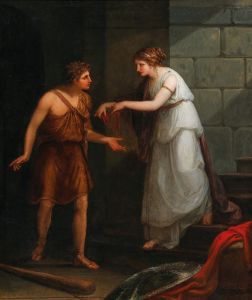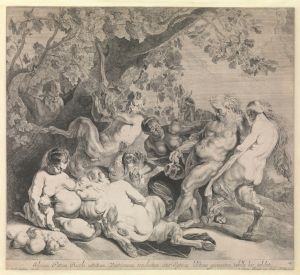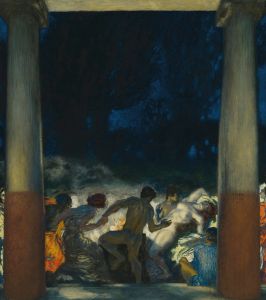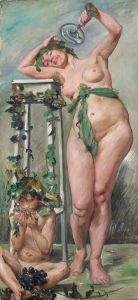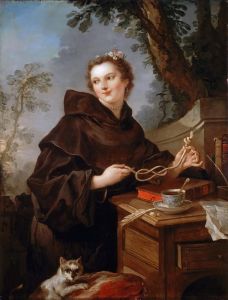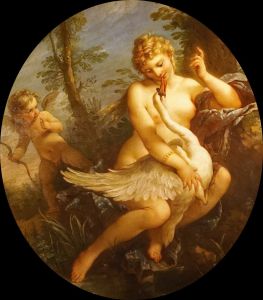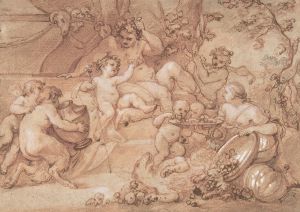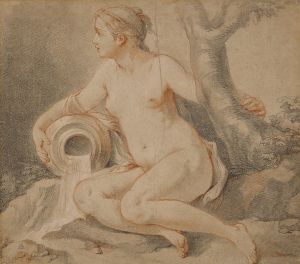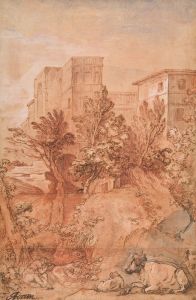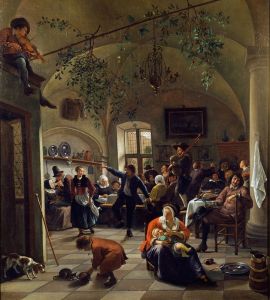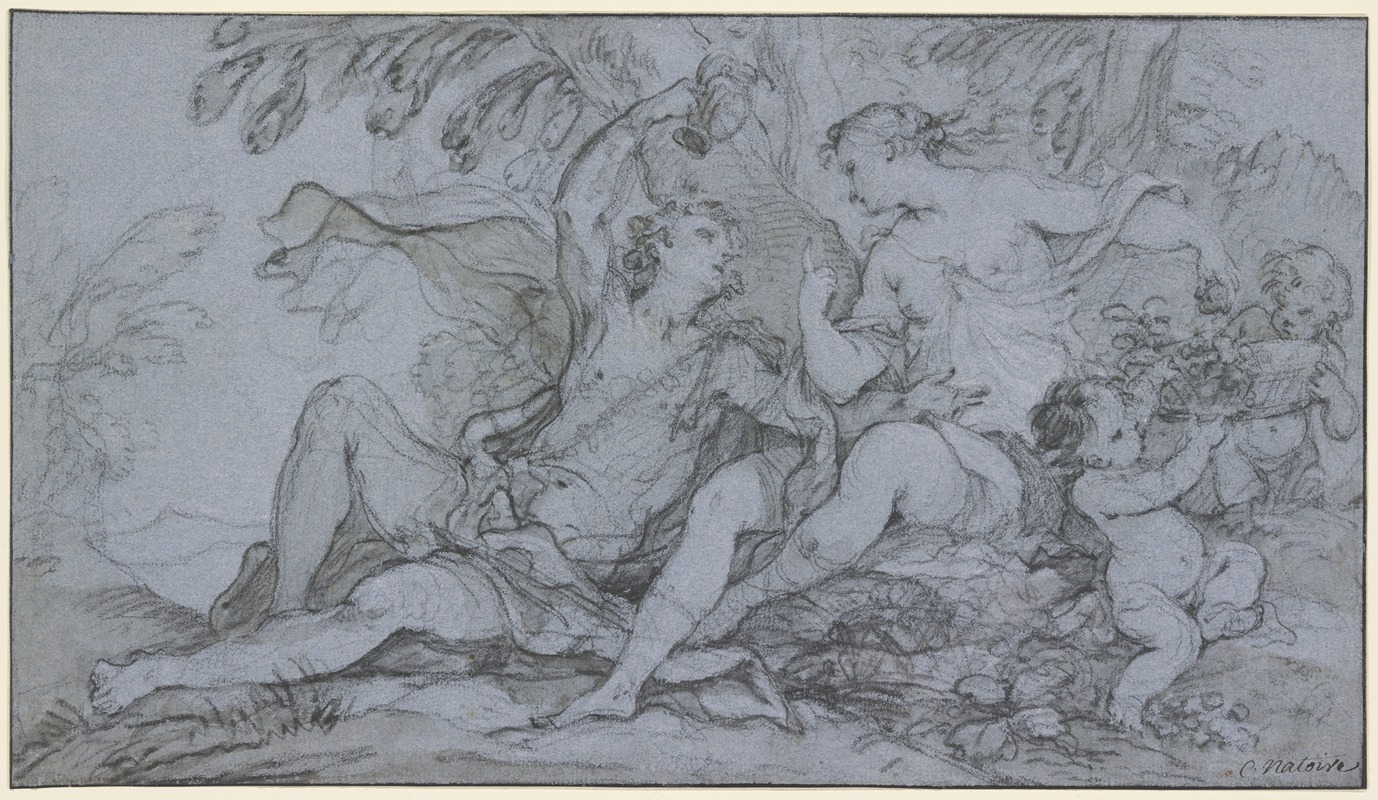
Bacchus and Ariadne
A hand-painted replica of Charles-Joseph Natoire’s masterpiece Bacchus and Ariadne, meticulously crafted by professional artists to capture the true essence of the original. Each piece is created with museum-quality canvas and rare mineral pigments, carefully painted by experienced artists with delicate brushstrokes and rich, layered colors to perfectly recreate the texture of the original artwork. Unlike machine-printed reproductions, this hand-painted version brings the painting to life, infused with the artist’s emotions and skill in every stroke. Whether for personal collection or home decoration, it instantly elevates the artistic atmosphere of any space.
Charles-Joseph Natoire was an 18th-century French painter known for his Rococo style and contributions to decorative arts. One of his notable works is "Bacchus and Ariadne," which reflects the mythological themes popular during his time. Natoire was born in 1700 in Nîmes, France, and trained under prominent artists such as Louis Galloche and François Lemoyne. He became a member of the prestigious Académie Royale de Peinture et de Sculpture in 1734, which marked a significant milestone in his career.
"Bacchus and Ariadne" is a painting that depicts a scene from classical mythology, a subject that fascinated many artists of the Rococo period. The story of Bacchus and Ariadne originates from Greek mythology. Ariadne, the daughter of King Minos of Crete, was abandoned by the hero Theseus on the island of Naxos. She was discovered by Bacchus (Dionysus in Greek mythology), the god of wine, who fell in love with her and eventually married her. This mythological narrative was a popular subject in art due to its themes of love, abandonment, and divine intervention.
Natoire's interpretation of this myth is characterized by the elegance and decorative quality typical of Rococo art. His use of soft colors, fluid lines, and graceful figures exemplifies the style's emphasis on beauty and ornamentation. The painting likely captures the moment Bacchus encounters Ariadne, highlighting the emotional and dramatic aspects of the myth. Natoire's skillful composition and attention to detail would have been intended to evoke a sense of romance and fantasy, appealing to the tastes of his contemporary audience.
Throughout his career, Natoire was known for his ability to blend classical themes with the playful and ornate elements of Rococo. His works often featured mythological and allegorical subjects, which were in high demand among the French aristocracy and patrons of the arts. In addition to paintings, Natoire was also involved in creating designs for tapestries and other decorative arts, further showcasing his versatility as an artist.
While specific details about the creation and current location of "Bacchus and Ariadne" by Natoire are not widely documented, his contributions to the art world remain significant. Natoire's work is part of the broader tradition of French Rococo painting, which celebrated the beauty of mythological and pastoral scenes through a lens of elegance and refinement.
Natoire's legacy is preserved through his numerous works housed in museums and collections around the world. His influence can be seen in the continued appreciation for Rococo art and its ability to capture the imagination with its whimsical and decorative qualities. As an artist, Natoire played a crucial role in the development of 18th-century French art, and his paintings, including "Bacchus and Ariadne," continue to be studied and admired for their artistic merit and historical significance.





